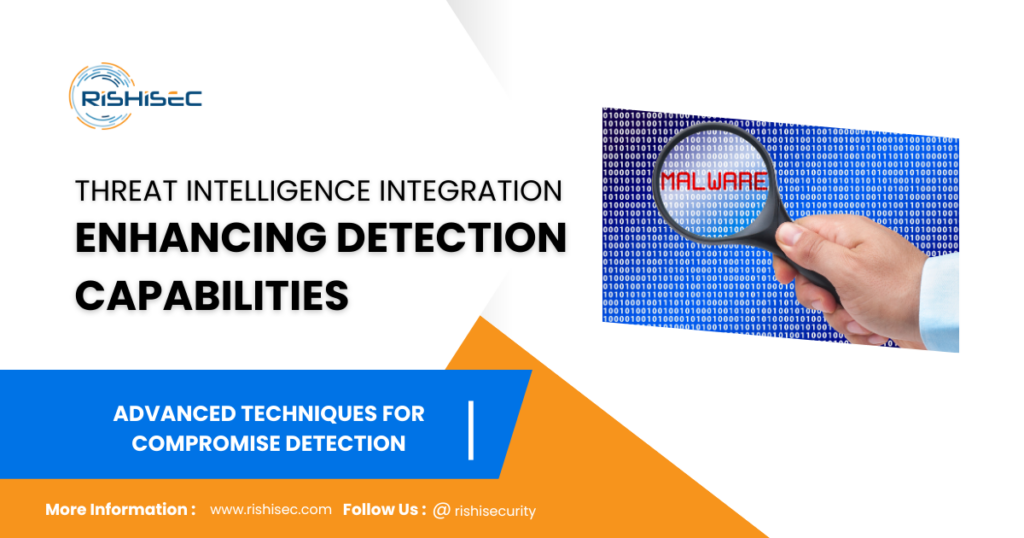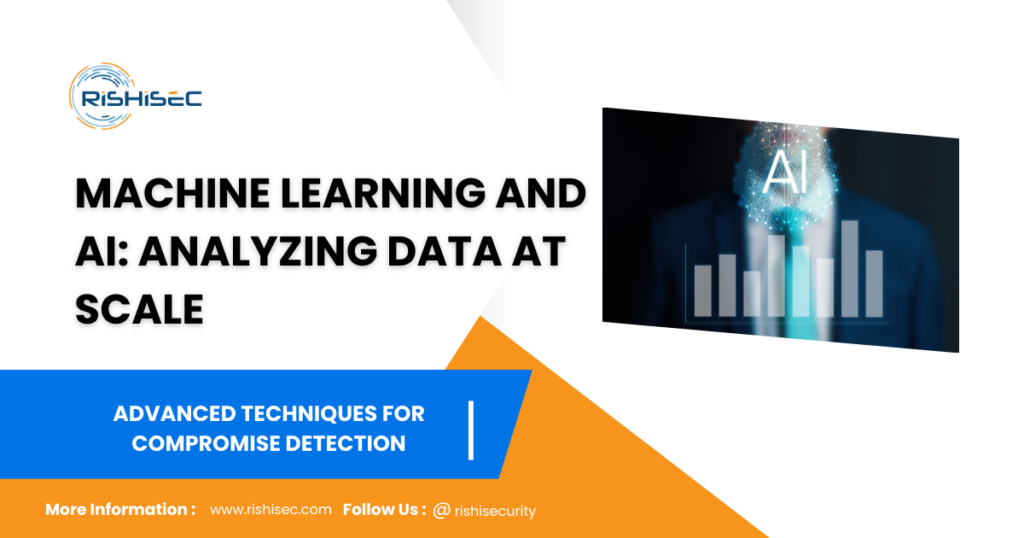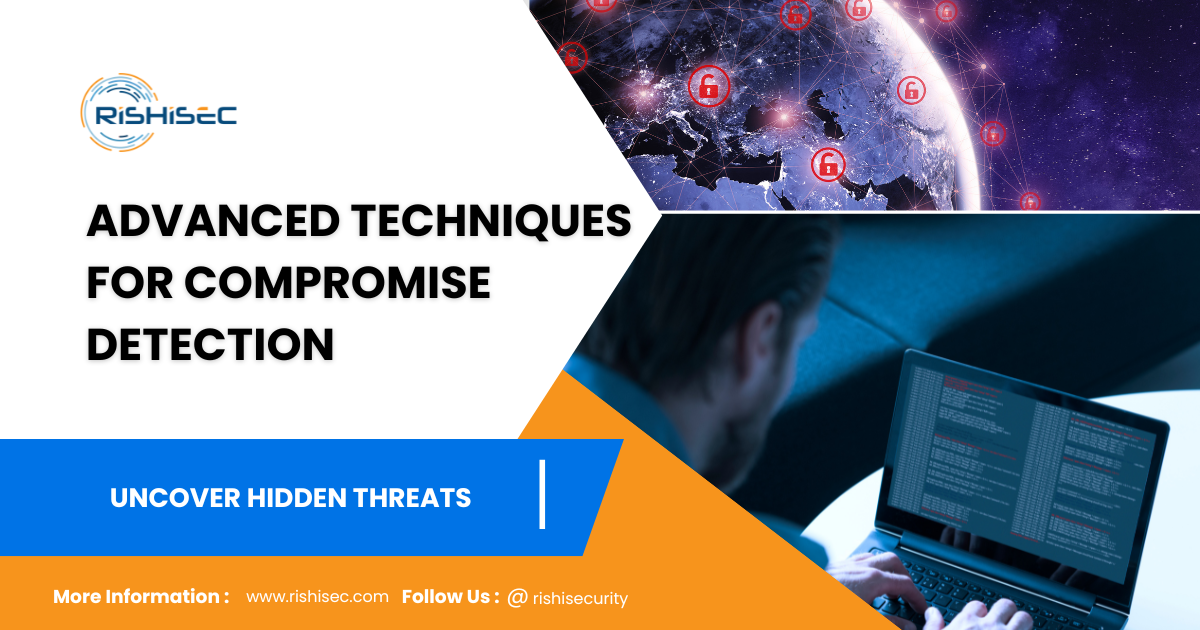Contents
Advanced Techniques for Compromise Detection
In the ever-evolving world of cybersecurity, sticking to traditional detection methods is no longer sufficient. Sophisticated cyber threats require equally advanced detection strategies. To effectively safeguard your organization, it’s essential to adopt techniques for compromise detection. These methods delve deeper into potential vulnerabilities and offer a proactive approach to security. This guide explores cutting-edge techniques and their practical applications to help you stay ahead of emerging threats.
Unveiling Latest Techniques for Compromise Detection

1. Behavioral Analytics: Understanding Anomalous Activity
Behavioral analytics is a powerful technique that involves monitoring and analyzing user behavior to detect anomalies. By establishing a baseline of normal activity, deviations from this norm can indicate potential threats. This technique goes beyond traditional signatures and heuristics by focusing on how users interact with systems and data.
How It Works:
- Baseline Establishment: Start by creating a profile of normal user behavior, including typical access patterns and application usage.
- Anomaly Detection: Monitor for deviations from this baseline. For instance, if a user who normally accesses only their department’s files suddenly tries to access sensitive data from other departments, this could be a sign of suspicious activity.
- Contextual Analysis: Combine behavioral data with contextual information (e.g., time of day, location) to determine the likelihood of a true threat versus a false positive.
Real-World Example:
Consider a financial institution that implemented behavioral analytics. They detected unusual login patterns and file access by a user who was not part of the accounting team. This early detection allowed them to investigate and thwart a potential insider threat before any data breach occurred.
2. Threat Intelligence Integration: Enhancing Detection Capabilities

Integrating threat intelligence into your compromise detection strategy enhances your ability to identify and respond to emerging threats. Threat intelligence feeds provide real-time data on known attack patterns, tactics, and indicators of compromise (IOCs). This information helps correlate external threats with internal data, improving detection accuracy.
How It Works:
- Data Aggregation: Aggregate threat intelligence from various sources, including commercial threat feeds, open-source intelligence, and information-sharing communities.
- Correlation: Cross-reference external threat data with your internal logs and alerts. For example, if a known malware variant is detected on your network, threat intelligence can help identify whether it matches any reported threat actor tactics.
- Alerting and Response: Use threat intelligence to configure automated alerts for specific IOCs or attack patterns. This proactive approach enables quicker detection and response.
Real-World Example:
A major tech company integrated threat intelligence into their security operations center (SOC). When a new ransomware strain was identified in threat feeds, the SOC team used this information to update their detection rules and immediately flagged an attempted attack, preventing a potential ransomware outbreak.
You may also like our this post: How to Address Insider Threats with Compromise Assessments
3. Machine Learning and AI: Analyzing Data at Scale

Machine learning (ML) and artificial intelligence (AI) are revolutionizing threat detection by analyzing vast amounts of data to identify patterns and anomalies. These technologies offer scalable and adaptive solutions to detect complex threats that might evade traditional methods.
How It Works:
- Data Analysis: ML algorithms analyze large datasets, including network traffic, user activity, and system logs, to identify unusual patterns indicative of a compromise.
- Pattern Recognition: AI models can recognize patterns and anomalies that traditional systems might miss. For example, AI can detect subtle changes in network traffic that suggest a data exfiltration attempt.
- Adaptive Learning: ML models continuously learn and adapt to new threats by analyzing historical data and updating detection algorithms.
Real-World Example:
A healthcare provider adopted an AI-driven threat detection system. The system identified unusual data access patterns that were indicative of a sophisticated attack targeting patient records. The early detection and automated response mechanisms allowed the provider to contain the breach and protect sensitive patient information.
4. Enhanced Endpoint Detection and Response (EDR): Real-Time Monitoring and Response
Enhanced Endpoint Detection and Response (EDR) solutions provide comprehensive monitoring and response capabilities for endpoints. EDR tools offer real-time visibility into endpoint activities, enabling quicker detection and mitigation of threats.
How It Works:
- Continuous Monitoring: EDR tools continuously monitor endpoint activities, including file operations, process execution, and network connections.
- Threat Detection: EDR solutions use a combination of behavioral analysis, signature-based detection, and threat intelligence to identify potential threats on endpoints.
- Automated Response: EDR tools can automatically respond to detected threats by isolating affected endpoints, blocking malicious processes, and initiating forensic analysis.
Real-World Example:
A global enterprise implemented an advanced EDR solution to manage its extensive network of endpoints. When an advanced persistent threat (APT) was detected, the EDR system automatically isolated the compromised endpoint and provided detailed forensic data, enabling the IT team to quickly investigate and remediate the issue.
Strengthening Your Detection Strategy
To maximize the effectiveness of these advanced techniques:
- Combine Methods: Integrate behavioral analytics, threat intelligence, machine learning, and EDR for a comprehensive detection strategy. Each method complements the others, providing a robust defense against diverse threats.
- Continuous Improvement: Regularly update and refine your detection techniques based on the latest threat intelligence and technological advancements. Staying current ensures you’re prepared for emerging threats and evolving attack methods.
- Expert Consultation: Engage with cybersecurity experts to tailor advanced detection techniques to your specific needs. Their expertise ensures optimal implementation and effectiveness, helping you navigate complex threat landscapes.
Conclusion
Incorporating advanced techniques for compromise detection is crucial for staying ahead of evolving cyber threats. By leveraging behavioral analytics, threat intelligence, machine learning, and enhanced EDR, you can proactively identify and address potential vulnerabilities, significantly strengthening your overall security posture.
Ready to enhance your security with cutting-edge detection techniques?
Start your free trial of SentryCA today and discover how our advanced solutions can help you stay ahead of the curve. Our tools are designed to meet your organization’s unique needs, providing comprehensive capabilities to detect and respond to threats effectively.


